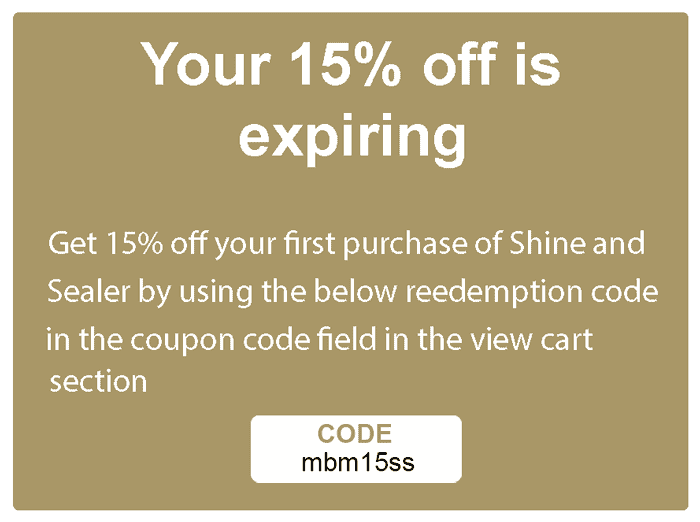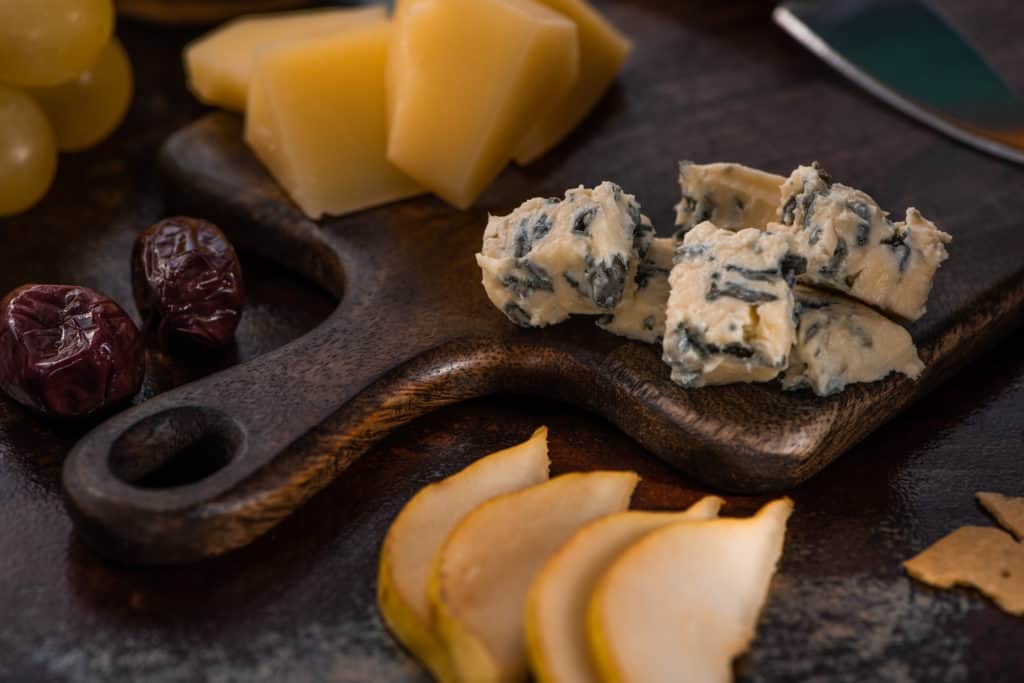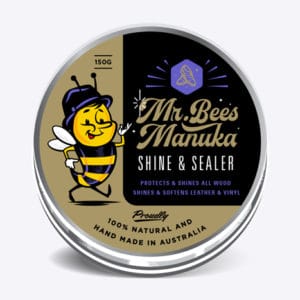Beeswax is a wonderful ingredient to be used in many products including furniture polish, as it seals and also waterproofs wooden surfaces.
Is beeswax polish food safe?
To answer this it really depends on the brand and the ingredients. As some products qualify and others don’t.
It is best to check the back label of the product and check to see if the beeswax polish has beeswax and natural oils.
If the beeswax polish you are using contains chemicals or essential oils I would that avoid that particular product for chopping boards!
In this article we will go through in depth how safe beeswax furniture polish is for your chopping boards, and what is the best recommended product to use for your next cheese platter!
-
Shine & Sealer 150gm$37.00
Is Beeswax Furniture Polish Food Safe?
It is safe to use beeswax polish food on most of your wooden surfaces and even on cutting boards.
The wax will give your wood or cutting boards a warm glow when you apply it to their surfaces.
The beeswax polish will also not affect the original appearance of your wood or alter it to have a fake commercial finish.
The traditional beeswax furniture polish has been used for sealing purposes on wood surfaces and offers protection on wood from sun and moisture content that may affect them.
Most beeswax furniture polishes are food safe because they contain natural ingredients with no other toxic chemicals added to them.
This makes them very safe as they keep bacteria and mold away and will not affect food.
However, some beeswax polish contains other ingredients, such as deodorized mineral spirit solvent, carnauba wax, and other preservatives, which are toxic and therefore not safe for food.
Ensure that you read the ingredients in the polish to ensure that you purchase the one safe for your food.

Is Beeswax Safe For Cutting Boards?
Yes, beeswax is safe on your cutting boards. It contains natural substances, which makes it water-resistant and food-safe.
When used on the cutting board surface, it will moisturize it and keep it a soft, lustrous shiny appearance.
When you use beeswax regularly on your cutting board, it will give your board a new appearance for a long.
Over time use of cutting boards will make them develop cracks and become warped. Boards will also become super dry from continuous washing with water, fading the colour of the wood over time.
So using beeswax for conditioning them will ensure that they have a protective seal on them. Also, they are natural and cost-effective to use.
-
Shine & Sealer 150gm$37.00
What Is The Best Oil To Use On A Cutting Board?
Your wooden cutting boards will need to be polished now and then, but not every oil available in the market is good for maintenance. The best oil to use is sunflower oil and jojoba oil.
These oils with beeswax is the best combination. As they are both natural oils and totally safe for cutting boards that prepare food.
(I) sunflower oil
After cleaning your cutting board thoroughly, you can apply sunflower oil to its surface to prevent moisture from penetrating the board.
After pouring your oil on all sides of your board, it will be coated. Give it some time to absorb and remove the excess oil and leave it to dry overnight.
The benefits of sunflower oil, when used with wax in the right ratio, will seal and waterproof your chopping board to prevent molds and bacteria from developing, which may poison your food.
When you use sunflower regularly, your cutting board will not dry out, and this will ensure that it will not develop cracks and splits on its surfaces and have a long life even when the board is washed occasionally.
Additionally, sunflower gives your board a nice shiny look and increases the water-resistance penetration levels.
Sunflower oil is also organic and does not have petrochemical ingredients in it, which may be harmful to your food.
Further, it is non-toxic with low viscosity, enabling it to soak deep when applied on the wood surface. The oil is also odorless and the best for conditioning your board.
(II) Jojoba oil
Jojoba oil is organic and has been used for wood conditioning purposes for all types of kitchen woodware, such as cutting boards.
Using jojoba oil and beeswax wood conditioner paste will deeply penetrate the wood grain, lock the moisture from penetrating the wood surface, and give it a smooth and velvety surface.
Jojoba oil is a wax that liquidity at room temperature, and when the temperature reaches 10 degrees, it solidifies.
The benefit of using this oil on your cutting board is that it is antibacterial; therefore, it will prevent bacterial and mold from growing on your wooden board.
Secondly, it is a natural preservative since it contains vitamin E. It is purely 100 plant-based with no additional disgusting petrochemical in it.
Another benefit of jojoba oil is that it is oxidative stable. Therefore, it has a pretty long shelf life to give your cutting board protection for long.
Further, it is non-allergenic when you compare it to other oil used for cutting board protection. You can safely use it on all your kitchen wood ware cover.
This wood conditioning treatment on your cutting board will also prevent your board from absorbing food odor, staining, and developing cracks.
Resealing your cutting board using jojoba oil is easy after every few uses. Check your board if it’s lighter in color and it has started to have a dry surface and re-season it.
Rub your jojoba oil on it using your fingers or a piece of clean rag and leave it to soak for a few minutes. Ensure that all the access oil and cleaned up
Please see:
Mr Bees Manuka Shine and Sealer ingredients being:
Manuka Beeswax
Leatherwood Beeswax
Sunflower Oil
Jojoba Oil
A combination of all natural ingredients that are totally safe for any cutting boards you use. We make a product that is combination of oils and organic beeswax.

Can You Treat A Cutting Board With Coconut Oil?
You should not use regular coconut oil to treat your cutting board because it will go rancid. It also contains a lot of saturated fats, which can affect the human heart.
-
Shine & Sealer 150gm$37.00
Do You Oil Both Sides Of A Cutting Board?
It would be best if you oil both sides of your cutting board as well as the edges.
As you start oiling your cutting board, ensure that you have cleaned it thoroughly and then put it somewhere to dry it properly.
Dribble a thin layer of the oil you will be using all over your cutting board, and then use a paper towel to rub the oil in. continue to oil both sides of your board and the edges.
Once you are done, place the cutting board, prop it against a sink or wall so that it can dry overnight.
If you actually use a oil and beeswax conditioner together, the oils will put the moisture back into the board, and the beeswax will seal and waterproof the chopping board.

Can You Use Baby Oil On A Chopping Board?
Yes, you can. Oil made for baby use is always safe because babies tend to put everything they can hold on to their mouth.
Most baby oil does not have a scent whatsoever and will not leave your chopping board with a funny smell which might affect your food.
However, some baby’s oil is not safe for chopping board applications because it contains some additional fragrances.
-
Shine & Sealer 150gm$37.00


